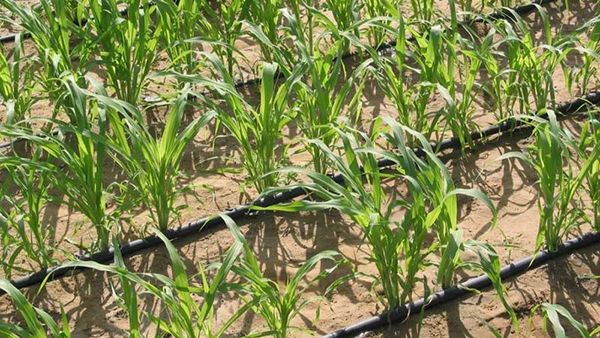Drip irrigation technology has been widely used in various agricultural planting areas, and the drip irrigation belt is a kind of water-saving irrigation equipment commonly used in arid areas a few days ago. It has a higher yield increase effect than the water-saving method of sprinkler irrigation. Used by fruit trees and greenhouse growing areas. The main difference between a drip irrigation belt and a drip irrigation pipe is that the drip irrigation belt is a flat strip with a thin wall thickness, and the drip irrigation pipe is a circular tube with a thick wall thickness. The corresponding service life is also longer and the pressure is more Large, convenient and reliable. Let’s introduce the application and installation knowledge of drip irrigation belt.
The drip irrigation belt is band-shaped when there is no water, and it will bulge only when there is water pressure. Its dripping position is the hole directly pierced during manufacture. The drip irrigation pipe is a pipe, and the dripper or drip sword is installed at a certain distance, which is more advanced than the drip irrigation belt.
The drip irrigation tape cuts the drip irrigation tube (band) slightly longer than the length of the plant row, the drip irrigation tube (band) is arranged along the plant row, and then one end is connected with the branch pipe. If the water source is canal water, river water, or reservoir water, you need to build a sedimentation tank for sedimentation, and then use a centrifugal pump to pump out the precipitated water, and then filter the water source of the centrifugal mesh filter. When the water content of the water source is large, in addition to installing submersible pumps, the wells should also be installed with centrifugal filters and mesh filters.
When the fertilizing tank is installed, the filtered water with fertilizer is pumped into the main pipe, and then branched to each branch pipe. When the pressure difference of the installed pressure gauge is greater than 0.7, it means that the mesh filter needs to be cleaned. The water for drip irrigation generally passes through the first hub for pressure stabilization, filtration, and fertilization, and then passes through the main pipes and branch pipes, and then drops to the roots of the plants from the drip irrigation belt. After the drip irrigation pipe (band) is installed, open the valve to flush the pipe with water, and then close the valve.

